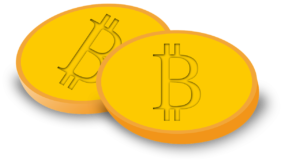The U.S. Mint: Producing Coinage for a Nation
The United States Mint is a vital institution that plays a pivotal role in the country’s economic and historical landscape. From producing coins that facilitate daily commerce to creating collector’s items that celebrate the nation’s heritage, the U.S. Mint’s operations extend far beyond what many people realize. This article dives deep into the U.S. Mint’s history, production processes, facilities, and the impact of its work on both national and global scales.
A Brief History of the U.S. Mint
Established in 1792, The United States Mint was one of the first federal institutions created by Congress under the newly ratified Constitution. The Coinage Act of 1792 laid the foundation for a standardized currency, addressing the diverse and often confusing forms of money circulating in the young nation. Philadelphia, the nation’s capital at the time, became home to the first Mint facility.
In its early years, the U.S. Mint produced coins from gold, silver, and copper. These metals were often sourced directly from citizens, who brought raw materials to the Mint to be refined and coined. Over the centuries, the Mint evolved to incorporate advanced technologies and expanded its operations to include multiple facilities across the country.
U.S. Mint Facilities and Their Functions
Today, the U.S. Mint operates six primary facilities, each with unique responsibilities:
1. Philadelphia, Pennsylvania
The Philadelphia Mint, the oldest facility, remains a cornerstone of U.S. coin production. It handles large-scale coin manufacturing and is home to the engraving and design teams responsible for creating the intricate artwork seen on coins.
2. Denver, Colorado
The Denver Mint primarily focuses on producing circulating coins and storing gold and silver bullion. Its iconic “D” mint mark is a hallmark of its coins.
3. San Francisco, California
Known for producing proof coins, the San Francisco Mint’s coins are highly sought after by collectors. These coins are crafted with exceptional detail and a mirror-like finish.
4. West Point, New York
The West Point Mint specializes in producing bullion coins made from precious metals such as gold, silver, and platinum. It also strikes commemorative and collectible coins.
5. Fort Knox, Kentucky
While not a coin-producing facility, Fort Knox is synonymous with the storage of the nation’s gold reserves. It’s managed by the The United States Mint and symbolizes economic security.
6. Washington, D.C. Headquarters
The Mint’s administrative and policy-making functions are based in Washington, D.C., ensuring seamless coordination across facilities.
Coin Production: From Concept to Circulation
The process of creating coins at the The United States Mint involves several meticulous steps, blending artistry and engineering:
1. Design and Approval
Every coin begins as an idea. Artists and engravers draft designs, often inspired by historical events, national symbols, or prominent figures. These designs undergo rigorous approval processes, including input from the Citizens Coinage Advisory Committee and the U.S. Secretary of the Treasury.
2. Die Creation
Once a design is finalized, a master die is created. This die serves as the blueprint for producing coin molds. Advanced technologies, such as computer-aided design (CAD) and laser engraving, ensure precision and consistency.
3. Blanking and Annealing
Metal sheets are cut into blanks, the round pieces that will become coins. These blanks are then annealed—heated and cooled—to soften the metal, making it easier to strike.
4. Striking
Blanks are fed into high-pressure coin presses, where dies imprint the design onto both sides. Circulating coins typically undergo a single strike, while proof coins may receive multiple strikes for enhanced detail.
5. Inspection and Packaging
Every coin undergoes strict quality control to ensure it meets the Mint’s standards. Once approved, coins are packaged for distribution to Federal Reserve Banks or direct sale to the public.
Types of Coins Produced by the U.S. Mint
The U.S. Mint’s portfolio includes several categories of coins:
1. Circulating Coins
These are the pennies, nickels, dimes, quarters, half-dollars, and dollar coins used in everyday transactions. The Mint produces billions of circulating coins annually to meet the nation’s needs.
2. Bullion Coins
Crafted from precious metals, bullion coins are primarily investment tools. Examples include the American Gold Eagle, American Silver Eagle, and American Platinum Eagle.
3. Commemorative Coins
These limited-edition coins celebrate significant events, individuals, or anniversaries. A portion of the proceeds from commemorative coins often supports related causes.
4. Proof and Uncirculated Coins
Designed for collectors, proof coins feature a high-gloss finish, while uncirculated coins have a matte-like appearance. Both are prized for their craftsmanship.
The Economic Impact of the U.S. Mint
1. Supporting Commerce
By producing circulating coins, The United States Mint ensures the smooth operation of everyday commerce. The Federal Reserve relies on the Mint to maintain an adequate supply of coins for banks and businesses.
2. Generating Revenue
The Mint operates as a self-sustaining entity, generating revenue through the sale of bullion, commemorative, and collector coins. This revenue offsets production costs and contributes to the U.S. Treasury.
3. Preserving History
Commemorative coins and medal programs help preserve the nation’s history, celebrating milestones and figures that shaped America. These programs also foster national pride and public awareness of historical events.
Challenges and Innovations
1. Rising Material Costs
Fluctuations in the prices of metals like copper, nickel, and zinc pose challenges for the Mint. Efforts to reduce costs include exploring alternative materials and improving manufacturing efficiency.
2. Counterfeit Prevention
The United States Mint employs cutting-edge technologies to combat counterfeiting. Micro-engraving, unique edge designs, and advanced chemical compositions are just a few measures in place.
3. Sustainability
As environmental concerns grow, the Mint is exploring ways to reduce its carbon footprint. Initiatives include recycling scrap metals and improving energy efficiency at facilities.
Recent News and Noteworthy Releases
1. 2024 American Innovation $1 Coin Reverse Proof Set
 On December 10, 2024, The United States Mint began accepting orders for the 2024 American Innovation $1 Coin Reverse Proof Set. This set features coins with a distinctive reverse proof finish, showcasing designs that honor significant innovations and innovators from various states. Collectors highly prize these coins for their unique finish and the stories they represent.
On December 10, 2024, The United States Mint began accepting orders for the 2024 American Innovation $1 Coin Reverse Proof Set. This set features coins with a distinctive reverse proof finish, showcasing designs that honor significant innovations and innovators from various states. Collectors highly prize these coins for their unique finish and the stories they represent.
2. U.S. Army Bronze Medal
The U.S. Mint released the U.S. Army Bronze Medal on December 5, 2024. This medal pays tribute to the dedication and service of the United States Army, reflecting the Mint’s tradition of honoring the nation’s military branches through meticulously crafted medals.
3. 2024 Morgan and Peace Dollar Reverse Proof Two-Coin Set
Released on November 21, 2024, the 2024 Morgan and Peace Dollar Reverse Proof Two-Coin Set has quickly become a highlight among numismatic offerings. This set includes reverse proof versions of the iconic Morgan and Peace dollars, coins that hold historical significance and are beloved by collectors for their intricate designs.
4. 230th Anniversary Flowing Hair High Relief Gold Coin
In celebration of its 230th anniversary, the U.S. Mint opened sales for the Flowing Hair High Relief Gold Coin on November 14, 2024. This coin features a high-relief depiction of the historic Flowing Hair design, paying homage to the early coinage of the United States and showcasing the Mint’s dedication to quality and historical commemoration.
Looking Ahead: The Future of the U.S. Mint
The United States Mint continues to adapt to changing economic landscapes and technological advancements. From integrating blockchain technology to exploring digital currency, the Mint is poised to play a crucial role in shaping the future of money.
Additionally, the institution remains committed to celebrating America’s heritage through innovative coin designs and programs. The recently launched American Women Quarters Program, for instance, highlights influential women in U.S. history, ensuring their legacies endure.
Conclusion
The United States Mint is more than a coin-producing entity; it is a symbol of the nation’s economic stability, historical preservation, and technological ingenuity. Through its diverse operations, the Mint supports commerce, celebrates heritage, and sets standards for quality and innovation. As it continues to evolve, the U.S. Mint remains an enduring institution at the heart of America’s identity.




